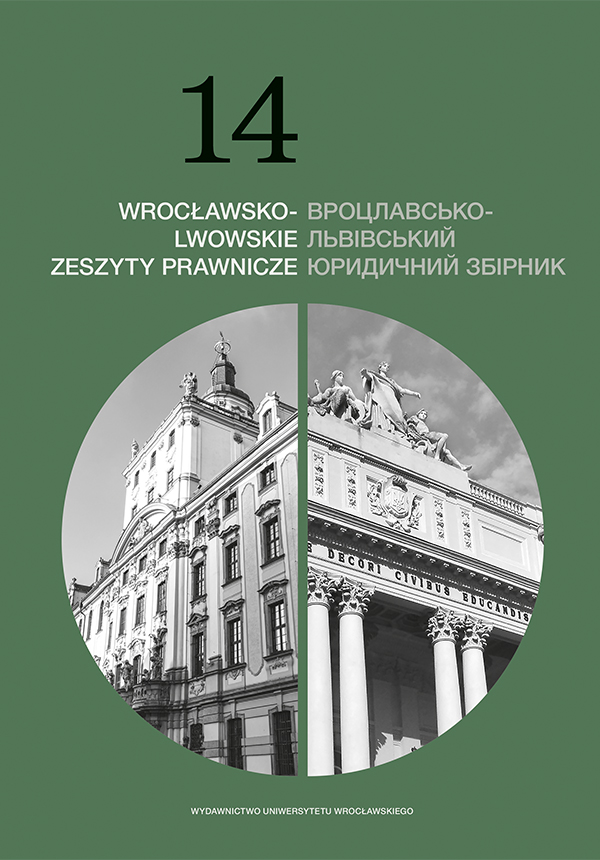

Articles

In this article we undertake a verification of the Phillips curve in Polish conditions during the pandemic and the war in Ukraine. The theoretical part introduces evolution of Phillips’s theory and the review of literature and its verification in the conditions of Polish economy. Additionally, theoretical aspects regarding crisis and exogenous shocks are discussed. The aim of the empirical part of the work was to investigate the existence of the Phillips curve in the Polish economy in 2013–2022. The direction and strength of the relationship between inflation and unemployment rates were tested based on monthly data on full period and the pandemic period. In the research econometric methods were used in order to estimate parameters of an autoregressive inflation model, including both the influence of unemployment on the inflation rate and exogenous shock that were caused by periods of economic disruption reflected by binary, sustained and interaction variables. It was concluded that in the pandemic time the effect of the Phillips curve was present and that was accentuated by the war. However, in the longer term, this effect was not perceived as a negative relationship between characteristics under study. Nevertheless, in the full period of the study, disruptions in inflation patterns which were caused by the pandemic and the period of Russian aggression against Ukraine were evident.
Akerlof G.A., Dickens W.T., Perry G.L., “Near rational wage and price setting and the optimal rates of inflation and unemployment”, Brooking Papers on Economic Activity 2000, no. 1.
Avgouleas E., “The global financial crisis, behavioural finance and financial regulation: In search of a new orthodoxy”, Journal of Corporate Law Studies 9, 2009, no. 1.
Benigno P., Canofari P., Di Bartolomeo G. et al., Uncertainty and the Pandemic Shocks, European Parliament Monetary Dialogue Paper PE 658.199, Luxembourg 2020.
Bishop M., Essential Economics: An A−Z Guide, New York 2009.
Brycz M., “Dyskusja nad neo-keynesowską krzywą Phillipsa — wnioski dla Polski”, [in:] Zachowania rynkowe w teorii i praktyce, ed. D. Kopycińska, Szczecin 2007.
Brycz M., “Pięćdziesiąt lat krzywej Phillipsa”, [in:] Problemy ekonomii i polityki gospodarczej. Materiały konferencyjne Międzynarodowej Konferencji „Ekonomiczne wyzwania XXI wieku. Polska – Unia Europejska – Świat”, ed. G. Maniak, Szczecin 2008.
Czech K., Polska gospodarka w początkowym okresie pandemii COVID-19, Warszawa 2020.
Di Crosta A., Ceccato I., Marchetti D. et al., “Psychological factors and consumer behavior during the COVID-19 pandemic”, PLOS ONE 16, 2021, no. 8.
Fisher I., “A statistical relation between unemployment and price changes”, International Labour Review 13, 1926, no. 6.
Friedman M., “The role of monetary policy”, American Economic Review 58, 1967.
Gali J., Gertler M., “Inflation dynamics: A structural econometric analysis”, Journal of Monetary Economics 44, 1999, no. 2.
Gordon R.J., The History of the Phillips Curve: An American Perspective, Evanston 2008.
Gossling S., Scott D., Hall C.M., “Pandemics, tourism and global change: A rapid assessment of COVID-19”, Journal of Sustainable Tourism 29, 2021, no. 1.
Grabia T., “Krzywe Phillipsa w krajach Grupy Wyszehradzkiej”, Studia i Prace WNEIZ US 41, 2017, no. 2.
Grabia T., “Rynek pracy w Polsce w okresie transformacji w świetle różnych wariantów Krzywej Phillipsa”, [in:] Wykorzystanie zasobów pracy we współczesnej gospodarce, ed. D. Kopycińska, Szczecin 2007.
“WHO COVID-19 dashboard”, World Health Organization, https://covid19.who.int/
Humphrey T.M., “The evolution and policy implications of Phillips curve analysis”, Economic Review 71, 1985, no. 2.
Karpavičius H., “Classification and interpretation of macroeconomic exogenous shocks — the case of Lithuania”, Socialiniai Tyrimai 2012, no. 2 (27).
Kępka A., Pająk N., “Wpływ wojny w Ukrainie na wysokość inflacji w Polsce”, Studia Ekonomiczne, Prawne i Administracyjne 4, 2022.
Kohlscheen E., Mojon B., Rees D., “The macroeconomic spillover effects of the pandemic on the global economy”, BIS Bulletin 2020, no. 4, https://doi.org/10.2139/ssrn.3569554.
Kuczyński G., Strzała K., Phillips Curve in Poland: Myth or Fact?, Łódź 2002.
Lucas R.E., Sargent T.J., “After Keynesian macroeconomics”, Federal Bank of Minnesota Quarterly Review 3, 1979, no. 2.
Lucas R.E. Jr, Rapping L.A., “Real wages, employment and inflation”, Journal of Political Economy 77, 1969, no. 5.
Mańkowski M., Ostrowski A., Włodarczyk R.W., “Związek między bezrobociem a inflacją w Polsce na tle krzywej Phillipsa”, Ruch Prawniczy, Ekonomiczny i Socjologiczny 74, 2012, no. 2.
McKibbin W.J., Fernando R., The Global Macroeconomic Impacts of COVID-19: Seven Scenarios, CAMA Working Paper No. 19/2020, Washington, DC 2020, http://dx.doi.org/10.2139/ssrn.3547729.
Mongiało Z., “Krzywa Phillipsa w aspekcie danych makroekonomicznych dla Polski”, Prace Naukowe Uniwersytetu Ekonomicznego we Wrocławiu. Ekonometria 34, 2011, no. 200.
Noy I., Nualsri A., What do Exogenous Shocks Tell Us about Growth Theories?, SSCIE Working Paper 07–16, Santa Cruz 2007.
Phelps E., “Phillips curves, expectations of inflation and optimal unemployment over time”, Economica (New Series) 34, 1967, no. 135.
Phillips A.W., “The relation between unemployment and the rate of change of money wage rates in United Kingdom, 1861–1957”, Economica 25, 1958, no. 100.
Reinhart C.M, Rogoff K.S., This Time is Different: A Panoramic View of Eight Centuries of Financial Crises, New York 2008.
Rodrik D., “Where did all the growth go? External shocks, social conflict, and growth collapses”, Journal of Economic Growth 4, 1999, no. 4.
Rothbard M.N., Wielki Kryzys w Ameryce, transl. M. Zieliński, W. Falkowski, Kraków 2010.
Samuelson P., Solow R., “Analytical aspects of anti-inflation policy”, American Economic Review 50, 1960, no. 2: Papers and Proceedings of the Seventy-second Annual Meeting of the American Economic Association (May, 1960).
Sargent T.J., Wallace N., “‘Rational’ expectations, the optimal monetary instrument and the optimal money supply rule”, Journal of Political Economy’ 83, 1975, no. 2.
Savun B., Tirone D.C., “Exogenous shocks, foreign aid, and civil war”, International Organization 66, 2012, no. 3.
Shaikh A., An Introduction to the History of Crisis Theories, New York 1978.
Sumner A., Hoy Ch., Ortiz-Juarez E., Estimates of the Impact of COVID-19 on Global Poverty, Wider Working Paper wp-2020-43, Helsinki 2020.
Tang C., Aruga K., “Effects of the 2008 financial crisis and COVID-19 pandemic on the dynamic relationship between the Chinese and international fossil fuel markets”, Journal of Risk and Financial Management 14, 2021, no. 5.
Wallusch J., “Ewolucja nowokeynesowskiej krzywej Phillipsa”, Ekonomista 2008, no. 5.